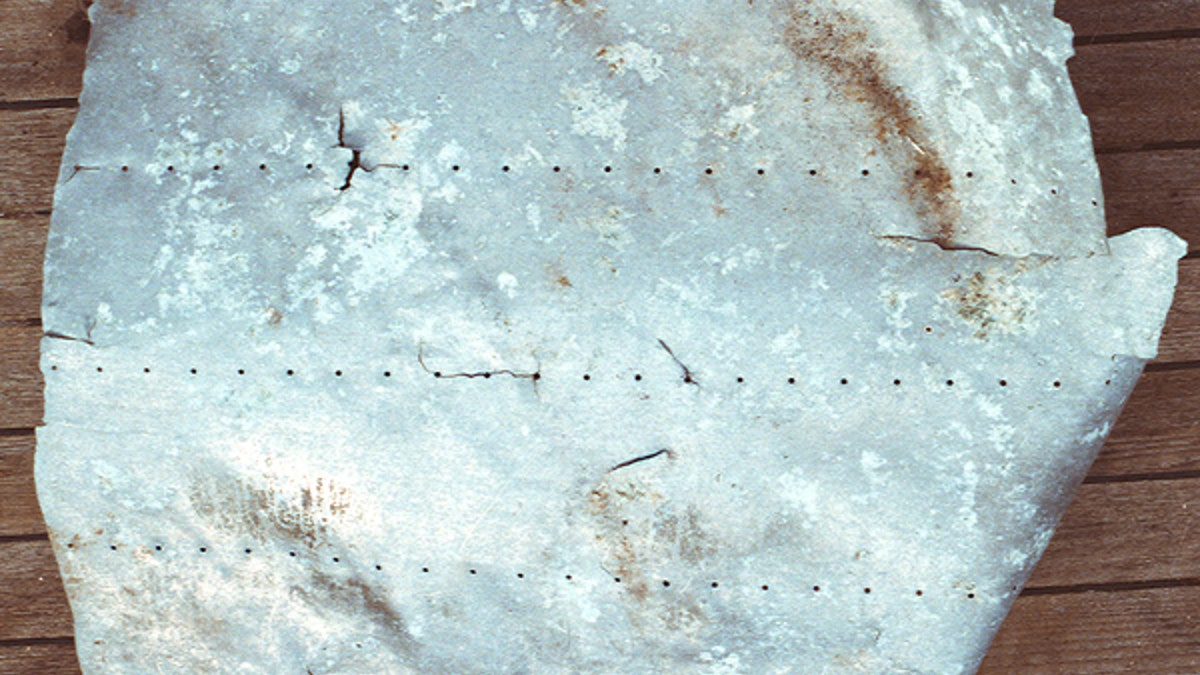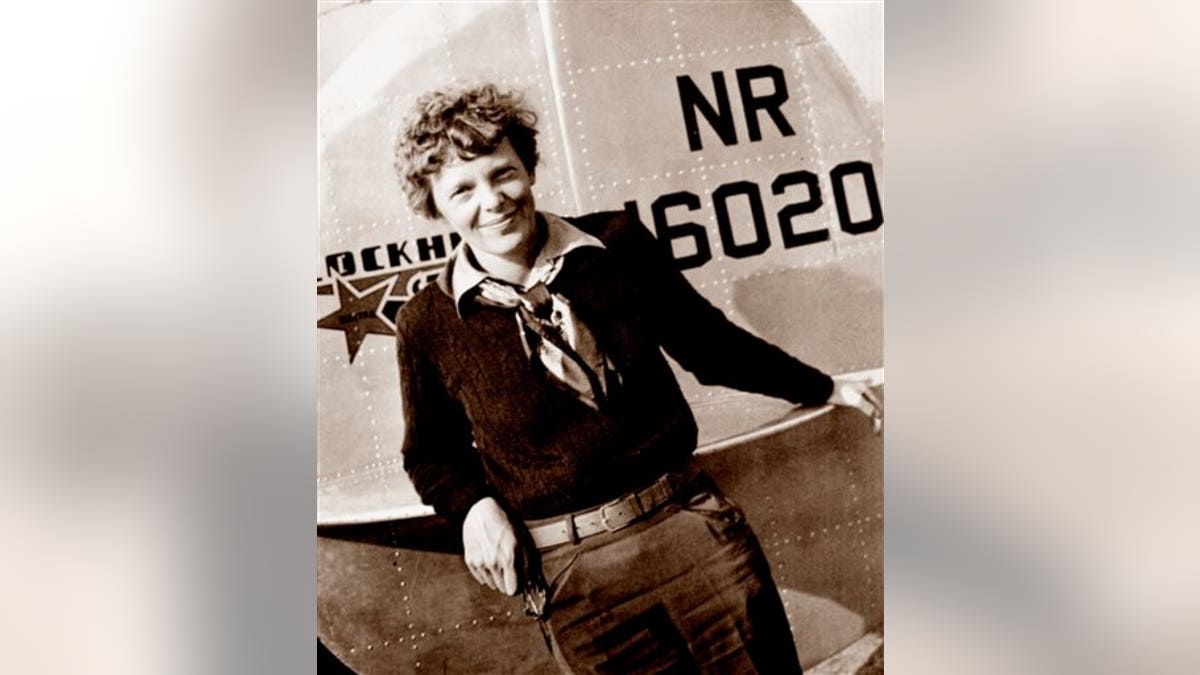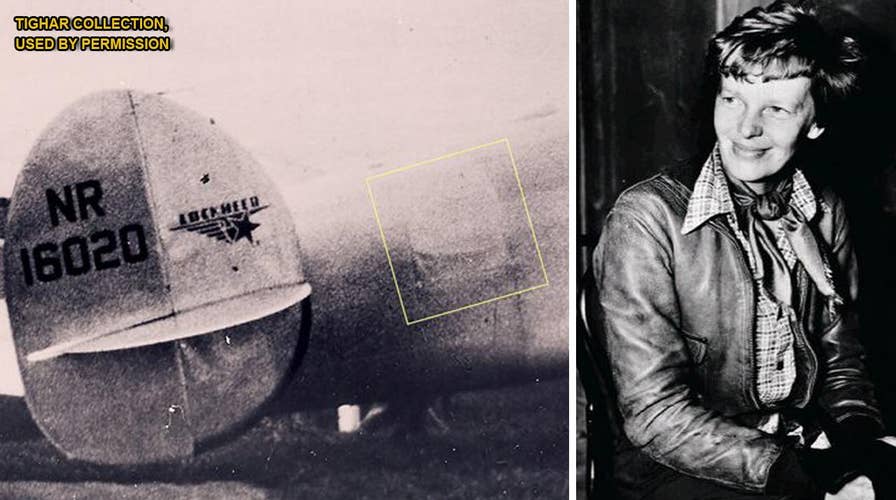Newly discovered footage may shed light on Amelia Earhart's disappearance
New footage, acquired after 10 years of negotiations, may help shed light on the 1937 disappearance of famed aviator Amelia Earhart. The footage, according to the International Group for Historic Aircraft Recovery, is 16mm film that apparently shows the Lockheed Electra Earhart was flying, taking off from Lae in Papua New Guinea.
Newly acquired film footage may shed new light on the mysterious fate of Amelia Earhart.
The International Group for Historic Aircraft Recovery (TIGHAR) says that it has film footage that may help solve the Earhart mystery. The group spent 10 years in negotiations to acquire the 16 mm movie film, which shows Earhart’s Lockheed Electra taking off from Lae in Papua New Guinea on a short test flight on July 1, 1937, and the subsequent refueling operation.
Earhart famously disappeared while attempting to fly around the world. The aviator and her navigator, Fred Noonan, went missing on July 2, 1937, during a flight from Papua New Guinea to Howland Island in the Pacific. Their fate became one of the great mysteries of the 20th century and is still hotly debated in the 21st century as well.
AMELIA EARHART DISCOVERY? RESEARCHERS EYE PAPUA NEW GUINEA 'WRECK SITE'
The key detail in the film is an aluminum patch on the plane’s fuselage, which may correspond with an aluminum fragment discovered in 1991 by TIGHAR on the remote island of Nikumaroro, a coral atoll 1,200 miles from the Marshall Islands.

The photograph taken from the film (TIGHAR Collection, used by permission)
“The key to a conclusive yea or nay is a comparison between the unique rivet pattern and deformation on the artifact and the unique rivet pattern and deformation visible in photos of the patch on the Electra,” explained TIGHAR, on its website. “The problem has always been the poor resolution in the handful of historic photos that show the patch.”
TIGHAR was contacted in 2008 by a woman who said she had photos and film footage of Earhart, Noonan and the plane in Lae. “The photos and movies were said to have been taken by a relative of the owner's ex-husband who was in the mining business during the great New Guinea gold rush of the 1930s and happened to be in Lae on July 1st,” the group said, adding that a letter from the photographer dated July 2, 1937, documents the film’s authenticity.
AMELIA EARHART SIGNED DOCUMENT DISCOVERED IN ATTIC BOX
One of the still photos of the plane’s refueling was particularly intriguing – it showed the rear section of the Electra with the aluminum patch. Researchers are keen to see whether the image corresponds with the aluminum fragment discovered in 1991.

The aluminum fragment discovered in 1991 (TIGHAR Collection, used by permission)
“Once we had the photos and film in hand, we realized that the still photos are actually taken from frames in the 16mm movie film,” said TIGHAR. “That’s good news. The film was probably shot at twenty-four frames per second. If the camera lingered on the right rear of the aircraft for only one second we have not one but twenty-four photos of the patch.”
“From a forensic imaging perspective, it’s like hitting the lottery,” said TIGHAR’s forensic imaging expert Jeff Glickman, in the statement.
AMELIA EARHART MYSTERY SOLVED? SCIENTIST '99 PERCENT' SURE BONES FOUND BELONG TO AVIATOR
TIGHAR is now working to get the brittle, decades-old acetate film scanned at high resolution, a delicate and expensive process. “Once the imagery is safely rendered in digital format, Jeff can start the painstaking process of forensic analysis,” the group explained.

This May 20, 1937 photo, provided by The Paragon Agency, shows aviator Amelia Earhart at the tail of her Electra plane, taken at Burbank Airport in Burbank, Calif. (Albert Bresnik/The Paragon Agency via AP)
TIGHAR Director Ric Gillespie told Fox News that the footage will be released at some point in the future, but not right away.
One theory is that Earhart died a castaway after landing her plane on Nikumaroro. Some 13 human bones were found on Nikumaroro, also known as Gardner Island, three years after Earhart’s disappearance.
DOZENS HEARD AMELIA EARHART RADIO FOR HELP AFTER CRASHING INTO PACIFIC: REPORT
Last year, a scientific study claimed to shed new light on the enduring mystery.
Richard Jantz, an emeritus anthropology professor at the University of Tennessee, argued that bones discovered on the Pacific Island of Nikumaroro in 1940 were likely Earhart’s remains. The research contradicts a forensic analysis of the remains in 1941 that described the bones as belonging to a male. The bones, which were subsequently lost, continue to be a source of debate.
There are a number of competing theories about what ultimately happened to Earhart.
CLICK HERE TO GET THE FOX NEWS APP
While some are convinced that Nikumaroro is Earhart’s final resting place, another theory suggests that she met her end on Mili Atoll, in the Marshall Islands.
The Associated Press contributed to this article. Follow James Rogers on Twitter @jamesjrogers





















